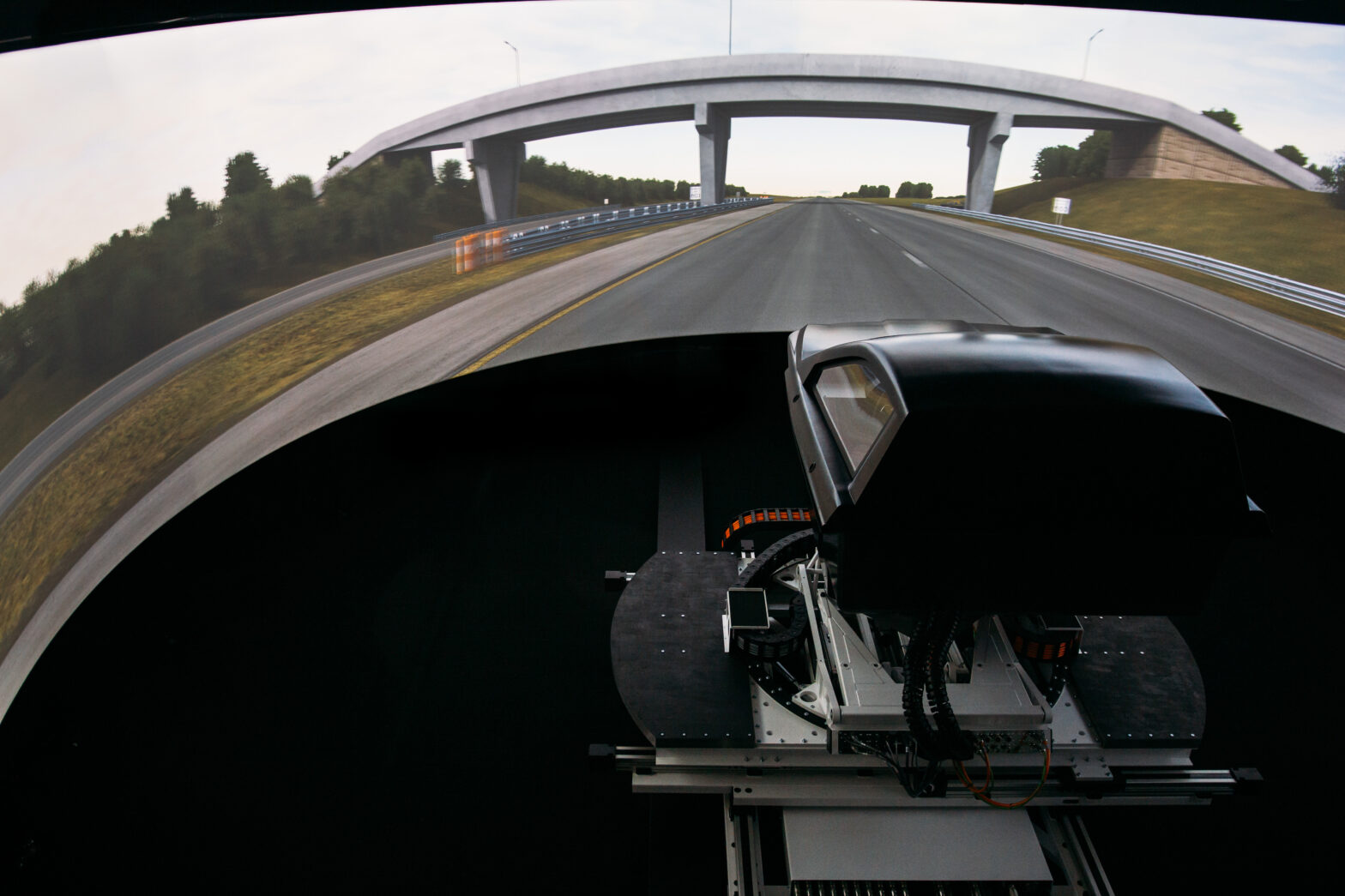1. Safe testing for autonomous cars
The proliferation of advanced driver assistance systems (ADAS) and the arrival of the autonomous car pose a lot of questions that can be expensive, impractical or downright dangerous for carmakers to test in the real world. Fancy driving your car head-on towards an HGV at 70 mph to check that the on-board systems will intervene?
Driver-in-the-Loop (DIL) simulation provides a safe, repeatable, all-weather test bench for the software hardware that will keep autonomous cars on the road. In a way, simulator testing can be more ‘real’ than the physical tests that must often rely upon the use of inflatable obstacles or cardboard cut-outs.
Some of a car’s own bits and pieces can be brought “into the loop” of simulations – for instance, communicating with real ECUs and sensor arrays – but because most of the work takes place in the virtual world, engineers have complete control over the conditions and testing scenarios.
>See also: The future of driverless cars and data security
2. Bring your own traffic
Let’s assume you are charged with building a physical prototype of an autonomous car – or perhaps even a dozen of them. Next, of course, you’ll need a representative place to drive them. Vehicle-to-vehicle communications, swarm intelligence and just about anything that requires a large number of connected cars to operate within an intelligent infrastructure can be staggeringly expensive to test in the real world.
3. Understanding autonomous handovers>
Do we actually need any human involvement at all in autonomous vehicle developments? There are several arguments for putting real people into contact with imagined vehicles. Perhaps the most fundamental is that we’re still a relatively long way off full autonomy.
The foreseeable future elements of manual driving will certainly remain. In particular, the handovers to-and-from manual control will receive quite a bit of scrutiny. If a vehicle intervenes in an emergency situation the driver must understand what’s happening. Likewise, if an artificial intelligence driver has to relinquish control for any reason, it has to ensure the driver is ready to take over the task. Both these cases require the testing and verification of human driver interactions.
4. Engineering brand feel into autonomous cars
Another fascinating question with autonomous cars is how manufacturers will go about engineering their brand DNA into the driving experience. Should a high-performance car or luxury mark still be able to reflect its spirit in its dynamics, for instance? A full-motion simulator provides almost limitless variability to tune and evaluate these trademark behavioural traits.
5. Queasy does it
Simulating a virtual environment gives you independent control over what vehicle occupants see and the motions and feedbacks they experience. Even the tiniest latency between these two senses can induce ‘simulator sickness’. Ordinarily, DIL simulator designers go to great lengths to avoid sickness or discomfort, but some car manufacturers have ironically started to deliberately induce this as a means of studying the root causes of motion sickness in vehicles.
That may sound like a rather niche area of research – and a rather unpleasant one at that. But as autonomous cars become more sophisticated, it’s set to become increasingly relevant. In the future, ‘drivers’ may well find themselves reading, texting or performing any number of tasks inside cars, and recent research has shown this to dramatically increase the occurrences of motion sickness.
Making people feel a little uncomfortable inside simulators could soon be big business as manufacturers search for real world countermeasures that can improve the autonomous car experience.
6. Powering the electric revolution
Electric and hybrid powertrains are set to be one of the defining trends of the next few years. These bring new challenges when it comes to calibrating vehicle drivability, not least because electric powertrains have very different propulsion characteristics to traditional IC engine based powertrains.
>See also: The inevitable road to the autonomous car: are they safe?
In particular, achieving seamless switching from one mode to another in a hybrid vehicle can be particularly nuanced. Manufacturers are increasingly turning to DIL simulators as a way of evaluating drivability before physical prototypes have even turned a wheel.
7. Preventing information overload
Cloud connectivity has resulted in spiralling amounts of data being available in-car. Information on everything from upcoming traffic conditions to future calendar appointments can now be displayed, leaving manufacturers pondering how to manage it all and enable practical and useful information flow for vehicle occupants.
Sourced from Phil Morse, technical liaison, Ansible Motion










